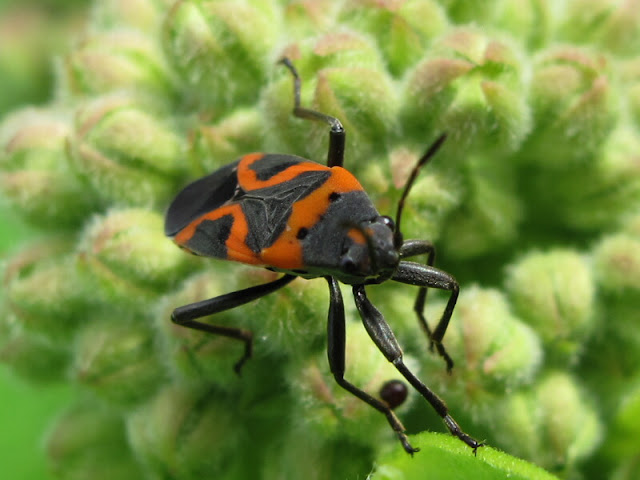Multiflora rose is a small-leaved shrub with sprays of one-inch white single roses in June. This rose is native to Japan and Korea, but was introduced in the U.S. as a "living fence." It has become an invasive pest that is beautiful in bloom, but a real problem to contain.

A close up view of a Multiflora rose blossom.

The Carolina rose is a small, scrambling shrub with 2" wide-open single blooms with five bright pink petals and stems with straight, needle-like thorns.

A third type of wild rose in the neighborhood may be a hybrid of the Multiflora and Carolina roses. The flower of this rose is a light pink single bloom with the same size and shape as the Carolina rose, but grows on a large upright bush with large hooked thorns similar to the Multiflora rose
A close up of a neighborhood hybrid rose.

A close up of Multiflora rose thorns. The Multiflora rose bush is very friendly. Every time I get near one, it will reach out, grab me, give me a big hug and not want to let go. (Ouch!)















































